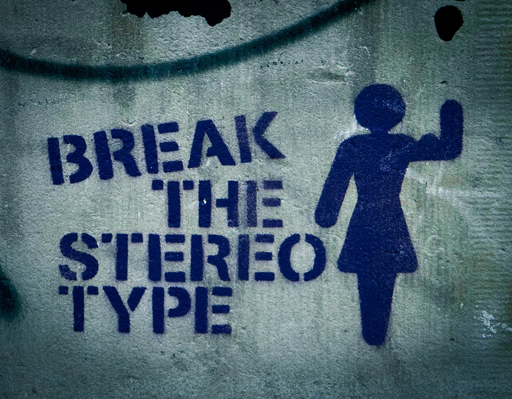1.4 What is gender stereotyping?
This United Nations Human Rights Office of the High Commissioner [Tip: hold Ctrl and click a link to open it in a new tab. (Hide tip)] defines gender stereotyping as:
“A gender stereotype is a generalised view or preconception about attributes or characteristics that are or ought to be possessed by, or the roles that are or should be performed by women and men. A gender stereotype is harmful when it limits women’s and men’s capacity to develop their personal abilities, pursue their professional careers and make choices about their lives and life plans. Harmful stereotypes can be both hostile/negative (e.g. women are irrational) or seemingly benign (e.g. women are nurturing). It is for example based on the stereotype that women are more nurturing, that child rearing responsibilities often fall exclusively on them.”
Gender stereotyping refers to the practice of ascribing to an individual woman or man specific attributes, characteristics or roles by reason only of her or his membership in the social group of women or men. Gender stereotyping is wrongful when it results in a violation or violations of human rights and fundamental freedoms. An example of this, is the failure to criminalize marital rape based on societal perception of women as the sexual property of men.
Compounded gender stereotypes can have a disproportionate negative impact on certain groups of women, such as, women in custody and conflict with the law, women from minority or indigenous groups, women with disabilities, women from lower caste groups or with lower economic status, migrant women.
International human rights law places a legal obligation on States to eliminate discrimination against women and men in all areas of their lives. This obligation requires States to take measures to address gender stereotypes both in public and private life as well as to refrain from stereotyping. The Convention on the Elimination of All Forms of Discrimination against Women (CEDAW) provides in its article 5 that, “State Parties shall take all appropriate measures to modify the social and cultural patterns of conduct of men and women, with a view to achieving the elimination of prejudices and customs and all other practices which are based on the idea of the inferiority or the superiority of either of the sexes or on stereotyped roles for men and women.” Other human rights treaties also require States Parties to address harmful stereotypes and the practice of stereotyping. For example, the Convention on the Rights of Persons with Disabilities (CRPD) also contains in article 8(1)(b) obligates States to combat stereotypes and stereotyping, including compounded stereotypes and stereotyping based on gender and disability.
Activity 10
Which of the following images might be stereotypically considered associated with boys or girls, or to be neutral? Write in the boxes below which toys you think belong in which categories:
| Girl | |
| Boy | |
| Neutral |
Discussion
The messages young children receive about gender roles and expectations are heard loud and clear through the books, toys and clothes marketed to children based on gender stereotypes. Young girls are encouraged to be pretty, passive and interested in pink, whereas young boys are encouraged to be strong, brave and interested in blue. It can be challenging to combat these stereotypes when they appear in seemingly harmless forms such as toys and books which are meant to be fun. Removing the labels of “this is for boys” or “this is for girls” and creating an inclusive environment centered around choice is important. Helping children to develop critical skills in questioning why someone’s interests should be limited based on their sex or gender is one way to disrupt the patterns of gender stereotyping and policing in relation to toys, books, and clothes. In turn this skill can be used to challenge gender stereotypes in relation to hobbies, subjects and career aspirations.
1.3 Gender inequality and childhood


